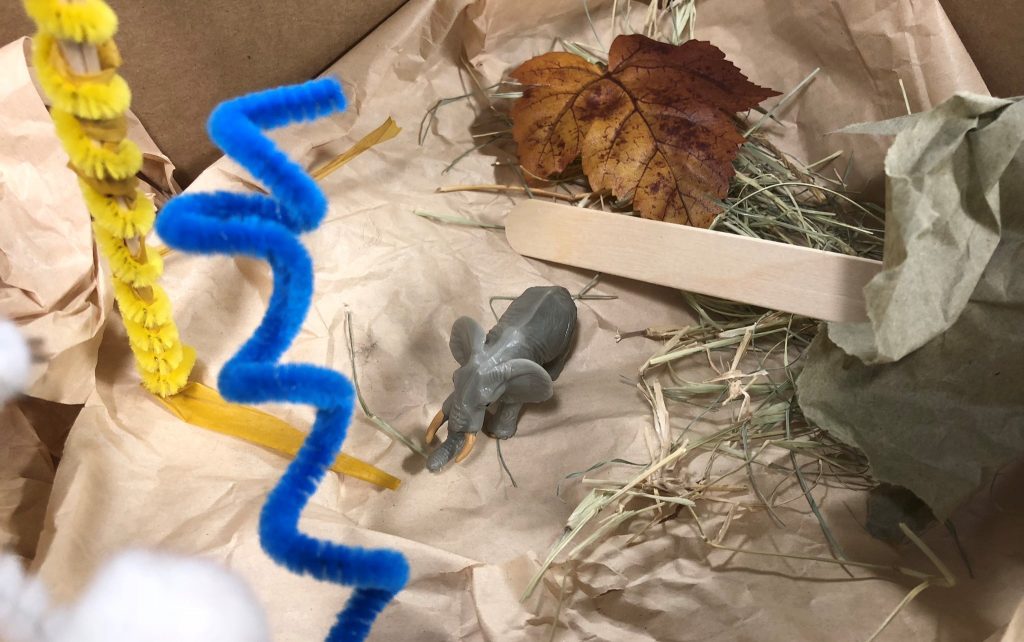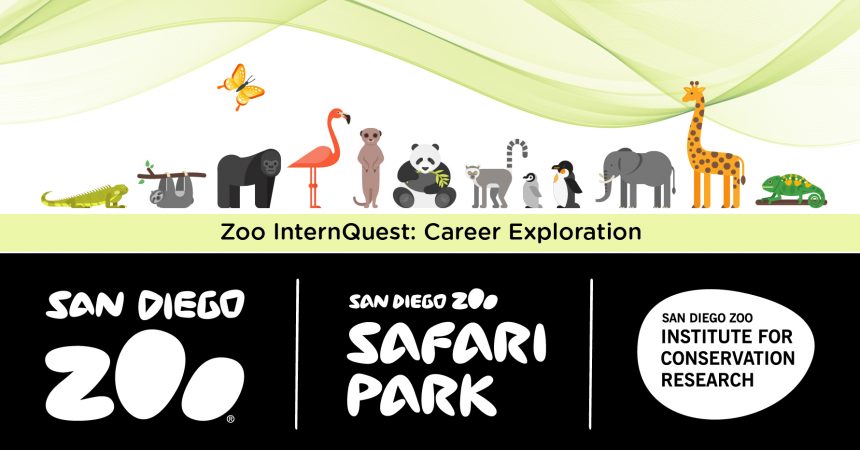Zoo InternQuest is a seven-week career exploration program for San Diego County high school juniors and seniors. Students have the unique opportunity to meet professionals working for the San Diego Zoo, Safari Park, and Institute for Conservation Research, learn about their jobs, and then blog about their experience online. Follow their adventures here on the Zoo’s website!
 Eating, playing, and puzzle solving – these are a few of the many activities that people and animals have in common when it comes to maintaining an active mind. From curious African elephants to exuberant mountain coatis, every animal has its own way of staying physically and emotionally healthy.
Eating, playing, and puzzle solving – these are a few of the many activities that people and animals have in common when it comes to maintaining an active mind. From curious African elephants to exuberant mountain coatis, every animal has its own way of staying physically and emotionally healthy.
On Thursday, we met Jessica Sheftel, the Animal Welfare Specialist for the San Diego Zoo. She introduced us to the five opportunities to thrive for animals in a managed care setting. These opportunities include ensuring animals have everything they need to exhibit natural behaviors that would be observed in the wild. The overarching idea of welfare is keeping animals healthy and mentally stimulated at the San Diego Zoo. Encouraging natural behaviors is one of the top priorities, as it allows the animal to behave as they would in the wild. For instance, Ms. Sheftel and her team have to get pretty creative when making enrichment for the Zoo’s polar bears. This enrichment includes attaching bones to bungee cords at various heights to promote muscle growth and mental stimulation. They use different parts of their body depending on where the bone is, similar to behaviors they would exhibit when eating their prey in the wild.
Like us, animals are always more willing to pursue an activity if food is involved. Similar to a parent telling their child to find treasure hidden in the backyard, keepers place little rewards that they know the animals love throughout their exhibit. This can include using dog or cat food toys that prompt animals to solve puzzles to reach their food. Keepers and even engineers interning for the Zoo, also create their own puzzles. From monkeys finding their way into boxes to anteaters weaving their tongues through mazes, there are hundreds of ways to make feeding time more stimulating and enriching. This can also mean promoting behaviors the animals would use to find food in the wild. For mountain coatis, a small mammal similar to a raccoon, this means hiding metal balls in the nooks and crannies of their habitat, and having the coatis sniff them out and pry them from their hiding places. The coatis are obsessed with these metallic toys and will hold onto and scratch at them with all the adorable might they can muster.
What began as simply giving animals something to do has since evolved into a unique system of inducing behaviors naturally seen in the wild. For animals to thrive, they need to be given the freedom of choice and have a sense of control. Having control allows animals to be in a calm and cooperative state. For a reindeer at the Zoo who has never seen snow, adding it to their habitat and granting them the ability to experience it how they wish allows them to guide their own enrichment. They can walk through the snow and feel it under their hooves, smell it in the trees, or lay down for a cool rest.
Following Ms. Sheftel’s presentation, we were able to design our own animal exhibits – but on a much smaller scale. In our case, we designed an exhibit for African elephants based on their native savanna. We considered the amount of space they needed for their immense size, and how they would behave in the wild. This included hanging balls and feeders from trees for them to reach with their trunks, knocked over trees, and a pool – all with the end goal of keeping the elephants healthy and engaged.
Similar to people taking care of their young ones, those at the Zoo always consider the welfare of animals under their care. What you see takes the combined efforts of specialists, like Ms. Sheftel, keepers, volunteers, and so much more. All animals have their own behaviors, habitats, and unique quirks to consider, and the end product is a result of hours of work, trial and error, and genuine care for the animals living at the Zoo.
Jennah, Real World Team
Week Five, Fall Session 2018


